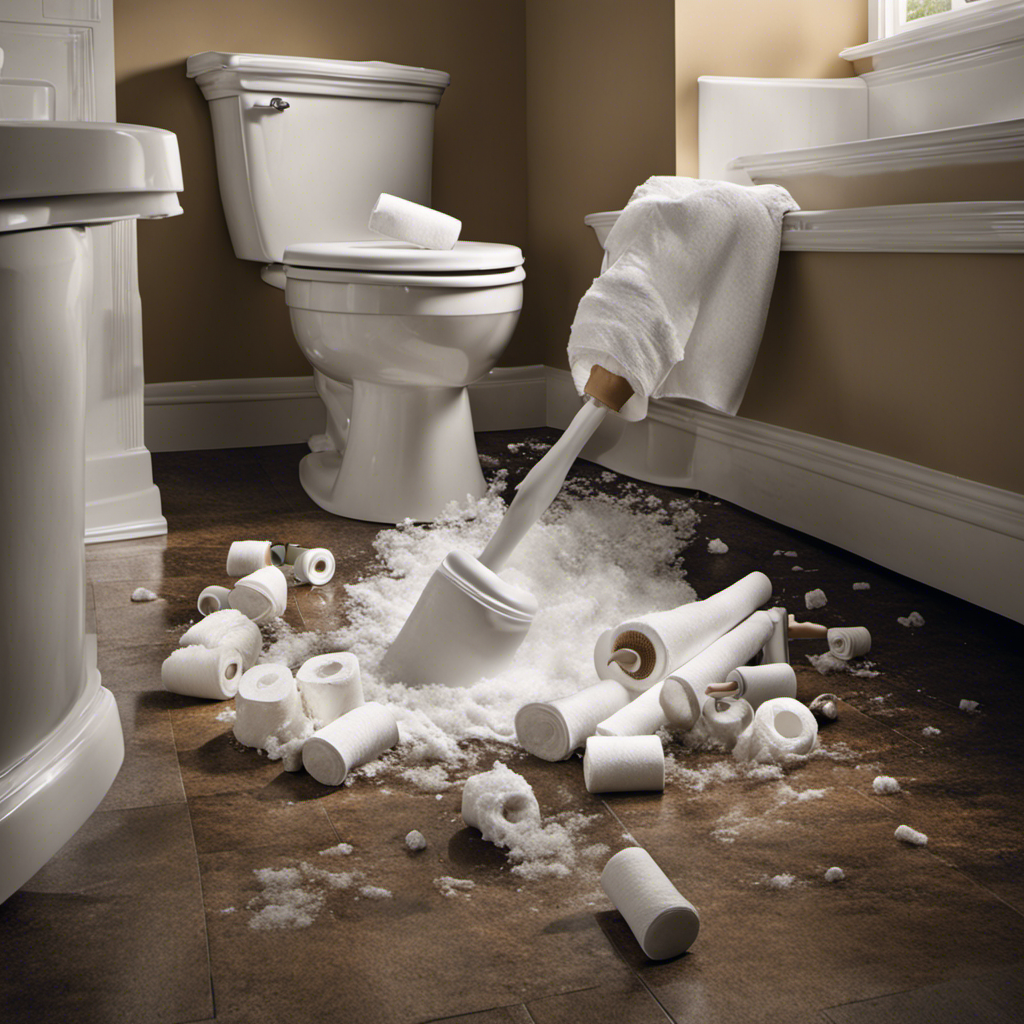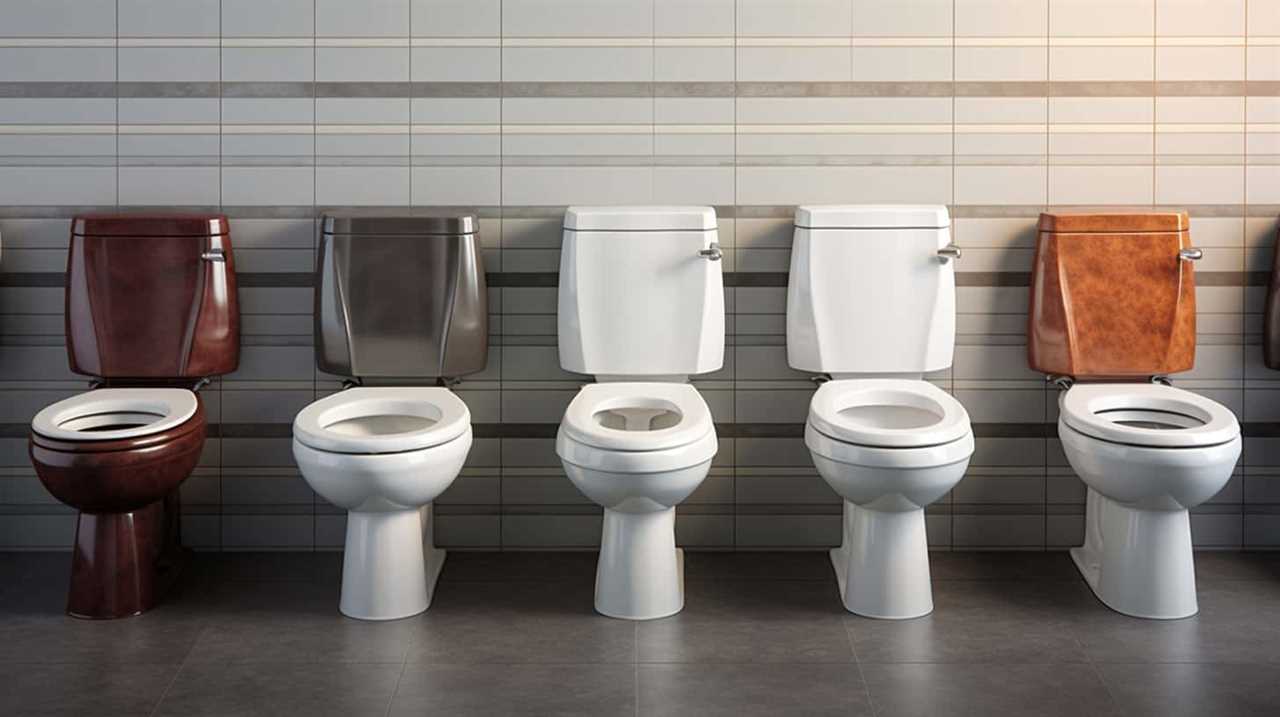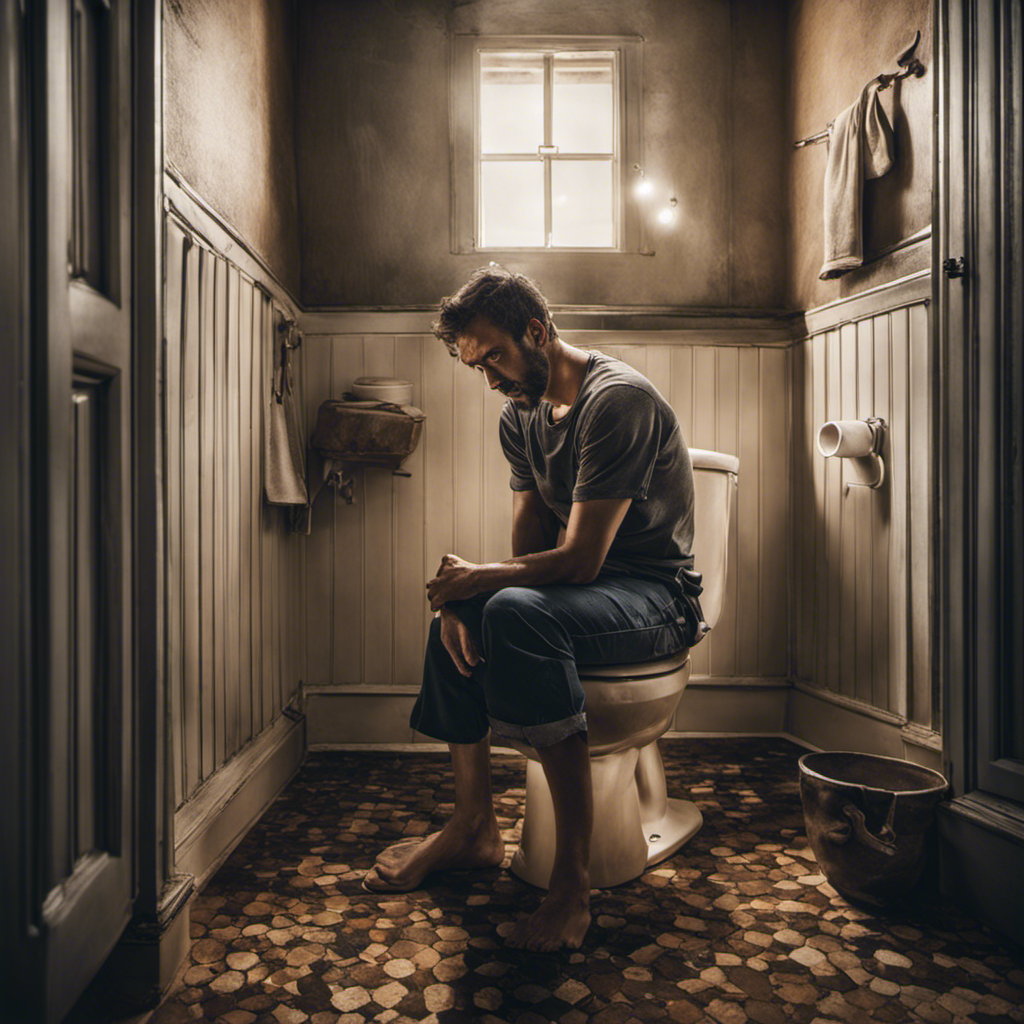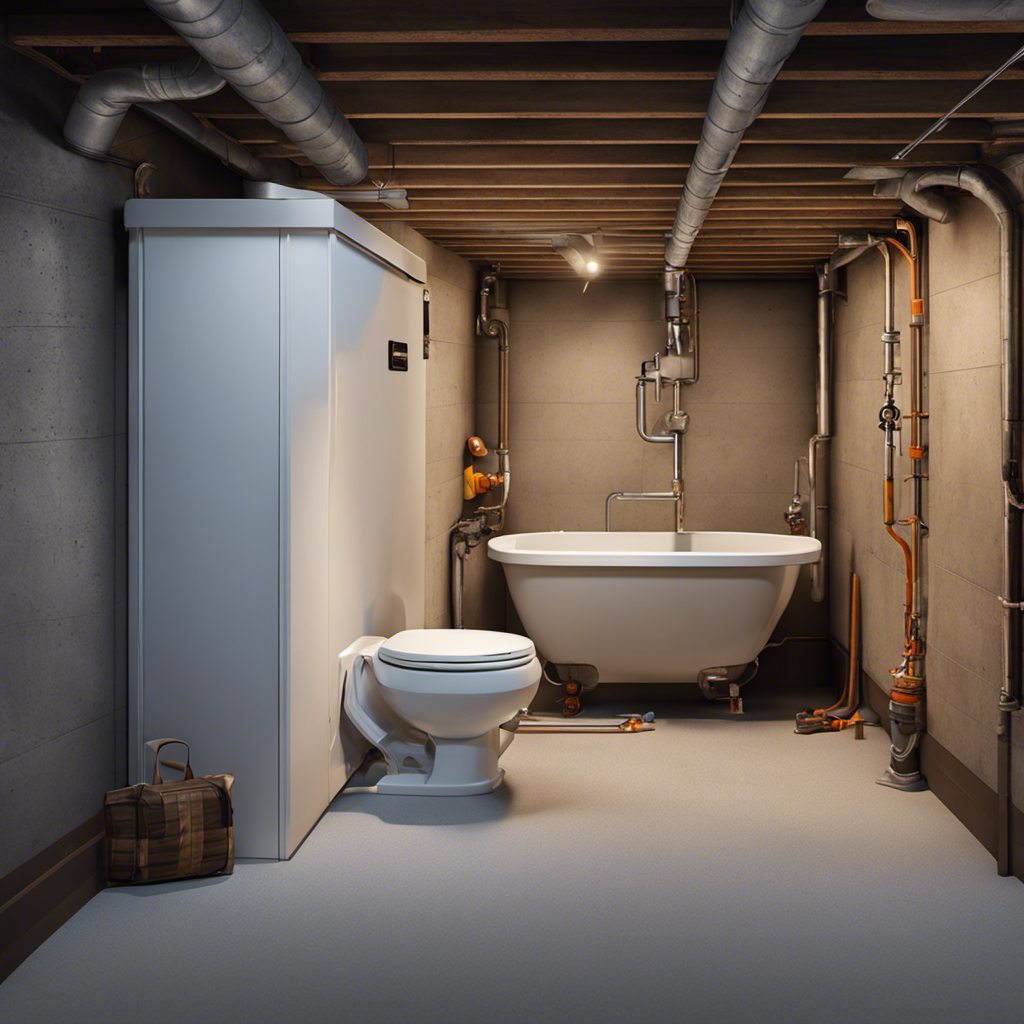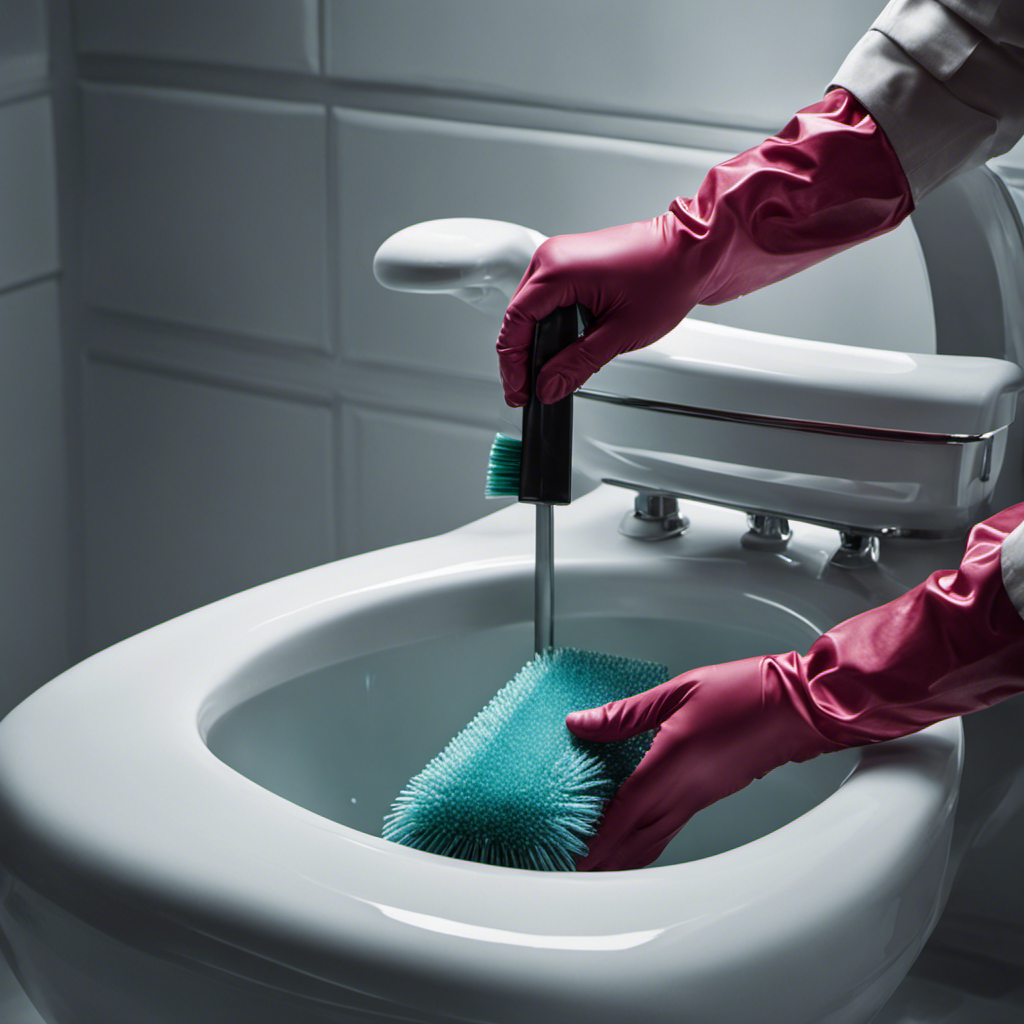As I stood in front of the bathroom door, a sinking feeling washed over me. The toilet was clogged again.
But fear not, my weary friend, for I am here to guide you through this plumbing predicament.
In this article, we will explore the causes of a clogged toilet, quick fixes to get things flowing again, do-it-yourself methods for unclogging, when it’s time to call in the professionals, and how to prevent future clogs.
Let’s dive right in and conquer this watery challenge together.
Key Takeaways
- Flushing excessive amounts of toilet paper can lead to blockages in the pipes.
- Use a toilet plunger or toilet auger to unclog the toilet.
- Avoid using unclogging chemicals and opt for a plunger as a safer and more environmentally friendly option.
- Call a professional plumber if the plunger and DIY methods don’t work or if there are multiple clogs, slow draining, water backing up, foul odors, or gurgling sounds.
Causes of a Clogged Toilet
One of the main causes of a clogged toilet is flushing excessive amounts of toilet paper. When we use an excessive amount of toilet paper, it can lead to a blockage in the pipes. This happens because the toilet paper does not break down easily and can easily get stuck in the narrow pipes.
To resolve this issue, there are a couple of tools that can be used. The first one is a toilet plunger. This tool creates a vacuum and helps to dislodge the clog by applying pressure and suction.
Another tool that can be used is a toilet auger. This tool is a long, flexible cable that can be inserted into the toilet drain to break up the clog and clear the blockage.
Both the toilet plunger and toilet auger are effective in unclogging a toilet and should be used cautiously to avoid any further damage to the toilet or the plumbing system.
Quick Fixes for a Clogged Toilet
Try using a plunger to fix the problem quickly and easily.
A toilet plunger is a simple yet effective tool for unclogging a toilet. To use it, place the rubber cup over the drain hole at the bottom of the bowl. Apply firm and consistent pressure by pushing and pulling the plunger up and down.
This creates suction, dislodging the blockage and allowing water to flow freely again. It is important to use a plunger specifically designed for toilets, as it has a flange that creates a better seal.
Avoid using unclogging chemicals as they can be harsh on your plumbing system and potentially cause damage. A plunger is a safer and more environmentally friendly option for clearing toilet clogs.
DIY Methods to Unclog a Toilet
Using a plunger is an effective and simple way to unclog a toilet. It creates pressure that dislodges the clog and allows the water to flow freely. However, if the plunger doesn’t work, you can try the baking soda and vinegar method. This natural DIY solution can help break down the clog and clear the pipes. Here’s how it works:
| Step | Instructions |
|---|---|
| 1 | Pour half a cup of baking soda into the toilet bowl |
| 2 | Follow it with one cup of vinegar |
| 3 | Let the mixture fizz and sit for 30 minutes |
| 4 | Flush the toilet to see if the clog is cleared |
| 5 | Repeat the process if necessary |
If neither the plunger nor the baking soda and vinegar method work, it’s time to call a professional plumber. They have the expertise and tools to handle stubborn clogs and ensure your toilet is working properly. Don’t hesitate to seek their assistance when needed.
When to Call a Professional Plumber
If the plunger and baking soda and vinegar method don’t work, it’s time to call a professional plumber. When dealing with a clogged toilet, it’s important to know when the issue requires professional assistance. Here are three signs that indicate a serious plumbing issue:
-
Multiple clogs: If your toilet consistently gets clogged, even after using DIY methods, it may be a sign of a more significant problem in your plumbing system.
-
Slow draining: If you notice that your toilet is draining slower than usual or there is water backing up into the bowl, it could indicate a blockage further down the line.
-
Foul odors or gurgling sounds: Unpleasant smells or strange noises coming from your toilet can indicate a more serious plumbing issue that requires professional attention.
Hiring a professional plumber may come with a cost, but it ensures that the problem is properly diagnosed and resolved, preventing further damage.
In the next section, we will discuss how to prevent future toilet clogs.
Preventing Future Toilet Clogs
To prevent future clogs, make sure to regularly maintain your toilet. Avoid flushing excessive amounts of toilet paper or non-flushable items. Proper toilet maintenance is crucial in ensuring the smooth operation of your plumbing system.
Here are some essential tips to keep your toilet in good working condition and avoid common mistakes that can lead to clogs.
- Use only a reasonable amount of toilet paper with each flush. Flushing large quantities at once can overwhelm the system and cause blockages.
- Refrain from flushing items such as baby wipes, sanitary products, or paper towels. They are not designed to break down easily and can cause obstructions.
Regularly inspect the toilet bowl and tank for any signs of leaks or cracks. Fixing these issues promptly can prevent water damage and potential clogs.
Lastly, consider using a plunger or toilet auger to clear minor clogs before they become major problems.
Frequently Asked Questions
How Do I Know if My Toilet Is Clogged or if There Is Another Issue With It?
To determine if my toilet is clogged or if there are other issues, I can check for signs like water not draining properly, gurgling sounds, or overflowing. If these occur, it’s likely there are toilet clogs or other toilet issues.
Can I Use Chemical Drain Cleaners to Unclog My Toilet?
I wouldn’t recommend using chemical drain cleaners to unclog your toilet. While they can be effective, there are potential dangers to consider. It’s best to call a professional plumber for assistance.
Are There Any Home Remedies I Can Try to Unclog My Toilet?
When it comes to preventing toilet clogs and exploring home remedies, there are a few effective options. However, it’s important to remember that sometimes professional plumbing services may be necessary for more stubborn clogs.
Can Flushing Too Much Toilet Paper Cause a Clog?
Flushing excess toilet paper can indeed cause a clog. It’s important to be mindful of the amount of toilet paper being flushed to prevent any blockages from occurring in the future.
What Should I Do if Plunging Doesn’t Work to Unclog My Toilet?
If plunging doesn’t work to unclog my toilet, I can try alternative solutions such as using a toilet auger or a chemical drain cleaner. If all else fails, I may need to consider calling a plumber for assistance.
Conclusion
In conclusion, dealing with a clogged toilet can be a frustrating experience. However, there are several quick fixes and DIY methods that can help you unclog it.
While calling a professional plumber may be necessary in some cases, it’s important to try these methods first to save time and money.
Remember, prevention is key, so take steps to avoid future toilet clogs by being mindful of what you flush down the toilet.
Don’t let a clogged toilet ruin your day. Tackle the problem head-on and get back to enjoying a fully functioning bathroom!
